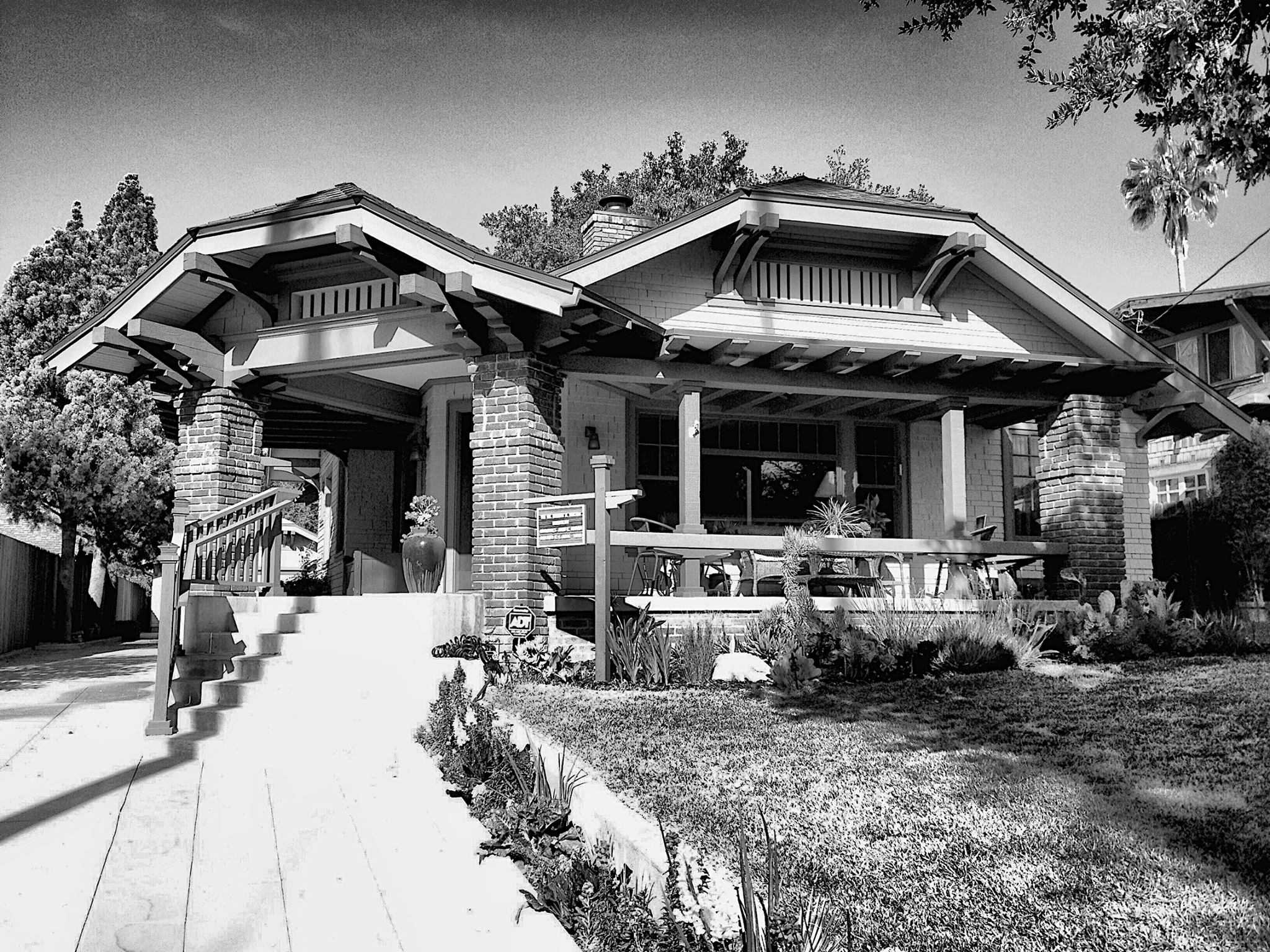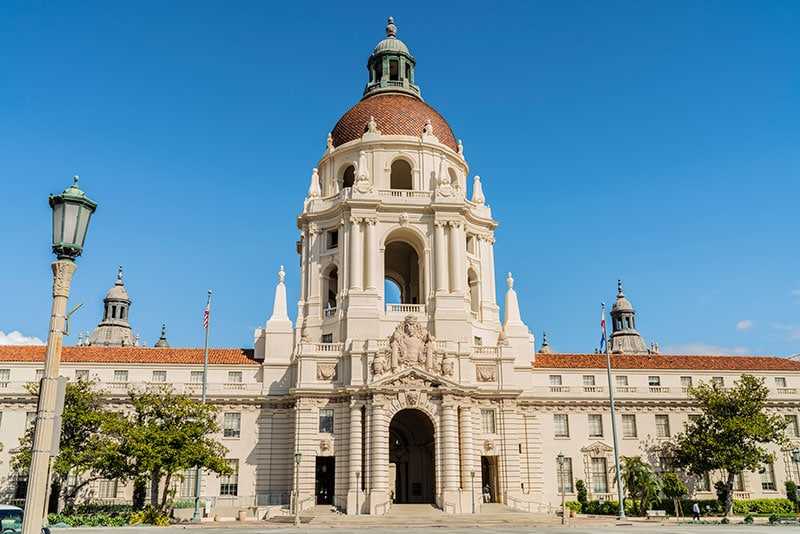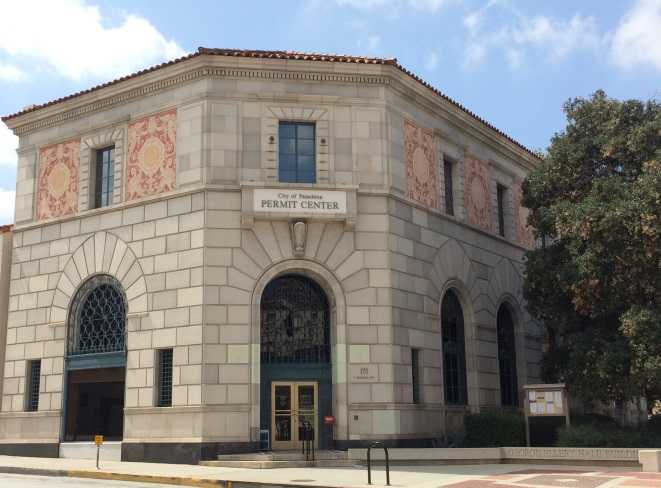
Landmark FAQ
Due to the great number and rich variety of early 20th Century homes that still exist in the neighborhood, Pasadena's architectural and historic surveyors in the 1980s nicknamed the neighborhood, Bungalow Heaven. The name became official in 1989 when it was designated as a city Landmark District -- the first city Landmark District in Pasadena. Attaining Landmark District status included development and approval of a neighborhood Conservation Plan designed "to assist homeowners . . . with restoration, alteration or additions, so that the historic and architectural qualities of the District are maintained and preserved."

Q. What is a landmark district?
A landmark district is an area which possesses character, interest, or value as a part of the heritage of the City. A landmark district, as is Bungalow Heaven, may also be the location of structures that embody elements of outstanding attention to architectural or landscape design, detail, materials, or craftsmanship.
Q. What is the purpose of a Landmark District?
The purpose of the district is to preserve the historic qualities of the area and to deter demolition, destruction, alteration, misuse, or neglect of architecturally significant buildings that form an important link to Pasadena’s past.
Q. How does a neighborhood become a Landmark District?
Residents of a proposed landmark district first develop a conservation plan, which sets forth the goals and objectives of the proposed district. They then petition the City for designation as a landmark district. Signatures from at least 51% of the property owners within the district must accompany the petition. Public hearings are held before the Historic Preservation Commission, Planning Commission, and City Council. The City Council has the final authority to designate an area as a landmark district. Bungalow Heaven became the City’s first landmark district in November of 1989.
Q. How does designation as a landmark district affect my property?
Landmark district designation does not affect the use or sale of the property. It does affect proposals for demolitions, exterior alterations, and new construction; these changes require design review and a “Certificate of Appropriateness” before the issuance of a building permit. City staff reviews minor projects; the Historic Preservation Commission reviews major projects. All decisions may be appealed.
Q. What is the Historic Preservation Commission?
The Historic Preservation Commission is a nine-member City Commission advisory board appointed by the City Council. The Commission’s main function is to protect historic resources in Pasadena through surveys, designations, and reviews of proposed changes to significant buildings. Members of the Commission are required to be knowledgeable about the City’s historic, architectural, and cultural heritage. The Commission meets twice a month on the first and third Mondays. Its meetings are open to the public.
Q. What is a Certificate of Appropriateness?
A Certificate of Appropriateness is an approval, in writing, which confirms that a proposed alteration complies with the Secretary of the Interior’s Standards and the Design Guidelines for Historic Districts. A certificate is required before a building permit can be issued.
Q. How do I submit an application for a Certificate of Appropriateness?
A completed application form, along with drawings, photos, and/or material samples, is submitted for review and approval to the Design and Historic Preservation Counter (Window 4) in the Permit Center. No fee is charged for this review. Applications must be approved before to beginning a project.
Q. What are examples of changes that are commonly reviewed in a landmark district?
Among the changes often reviewed in landmark districts are replacement of windows and doors, reconstruction of front porches, changes to the exterior siding, additions, and new garages.
Q. What are examples of work that is exempt from design review?
Exterior alterations not visible from the street, interior alterations, paint colors, landscaping, and routine maintenance are all exempt from review. Mechanical system upgrades are exempt if the work is not visible from the street.
Q. In making repairs to my house, where can I find additional information or assistance?
The Design & Historic Preservation counter (Window # 4) in the Permit Center has pamphlets and brochures about repairing or replacing historic features.
Historic Preservation – Planning & Community Development Department (cityofpasadena.net)
Additional information is contained in the Design Guidelines for Historic Districts.
Your neighborhood association or branch library may also have information. When replacement of original features is necessary, building supply stores, lumber yards, home and garden centers, woodworking shops, and architectural salvage yards are all sources of building materials that may be appropriate for properties in a landmark district. The City library system has magazines and reference books on historic building materials. Technical assistance is also available from Design & Historic Preservation Staff.
